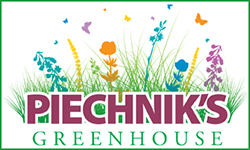Amending the Soil for Spring
Spring is almost upon us, and the itch to plant is building. Before doing so, we should be preparing the soil in our gardens to achieve the best conditions for the coming season.
The first thing you should do is clear out your beds. Pull the weeds, remove old plants, and break up the soil a bit.
The one thing you definitely should be adding is compost. Compost adds organic matter and nutrients to the soil. Whether you do your own gardening or purchase from the store, compost is the best thing you can add to your garden. It helps balance out PH, improve drainage, and helps build good soil structure.
One thing you should be cautious about adding is manure. If it has been composted properly (above 145 degrees and turned), it is a great additive in moderation. Whether it’s from cows, chickens, horses, or goats, manure will provide nitrogen, phosphorus, and additional organic matter to your garden. The catch is that these nutrients, when put on freshly, can cause some serious problems in your garden. Ammonia from fresh manure can burn the roots of your plants, pathogens can persist, and weed seeds that were in the food of the animal will still be present and ready to cause you an endless supply of headaches. Manure should be composted for a minimum of 6-9 months and turned regularly to help it get up to temperature and eliminate these issues.
Mulch is something you should NOT be adding to your soil. Yes, it’s organic material. Yes, it will help retain moisture. The problem is, uncomposted organic materials in your soil will steal nitrogen from your plants. While some in-garden composting is great and will add to your garden, it’s best to keep it to a minimum. You can turn last year’s mulch into the soil, but anything additional should wait and go on top of the soil once your seedlings have been planted or sprouted.
Next, you may have some additional amendments you’d like to add. Bone Meal, Gypsum, Alfalfa, and Slow-Release fertilizers are common options, but these will differ depending on your soil conditions. It’s a good idea to get a soil test or bring a sample into the Garden Center to get recommendations. All of these will add additional nutrients to your garden, but adding too much of any of them can cause issues with root burn. Asking for advice and following the instructions on the package will help you to get your soil in optimal condition.
Now it’s time to turn the soil to mix everything together. Whether your tool of choice is a hoe, a shovel, or a tractor, everything should be mixed in to a depth of about 6”. I find it’s easiest to work a little area at a time and work my way across the garden. It can be exhausting, but it doesn’t all have to be done at once.
Lastly, it’s a good idea to replenish the Mycorrhizal Fungi in your soil. Mycorrhizal is a fungus that creates pathways in the soil that adhere to the roots of your plants and help to deliver nutrients from a much larger area of the soil to your plants than the roots would do on their own. It helps with drought and soil deficiencies as well. As soil is disturbed these pathways are broken and Mycorrhizal numbers drop. Adding Mycorrhizal should be done upon planting, whether in tablet form that is placed under a transplant, or in granular form to be shaken over the beds. Either way, this will help your plants recieve more micro- and macro-nutrients, which will help them thrive.

